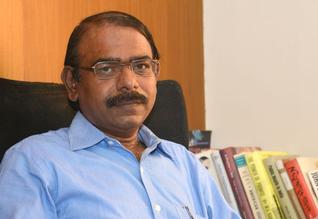
I would like to recall some of the observations made by social scientist M.S.S. Pandian at the symposium, “Making Meaning in Indian Cinema”, organised by the Indian Institute of Advanced Study, Shimla, in October 1995, to explain the role of mainstream cinema in Indian society before I address some of the criticisms about this newspaper’s coverage of the events and excitement surrounding Rajinikanth’s latest Tamil film Kabali.
“Cinema’s ability to upset pre-existing cultural boundaries and to reallocate previously ghettoised cultural practices followed from the unprecedented ways in which it brought together the elites and the masses. First of all, the pleasure of spectating did not fail to draw sections of the elite towards cinema as audience, though most of cinema’s patrons came from the lower classes. Secondly, cinema as a medium was informed by what one may term as ‘intertextual excess’ whereby it could borrow both from high and low cultural universes at the same time and recombine them in unexpected ways. Thirdly, as cinema evolved into an industry and trade, i.e., as an avenue for investment and profit, the elites were drawn to it. Then such profit-seeking critically depended on the subaltern consumers of cinema who were kept in contempt by the elite because of their allegedly low cultural tastes,” observed Pandian.
Varied complaints
The complaints about the coverage of Kabali were varied. For Balakrishnan, a reader from Vinayagapuram, Ambattur, the reportage on Kabali reflected the fall in the standard of this newspaper. He wrote: “I am totally bewildered and perplexed by the wide coverage given for a film by a reputed daily of the esteem of The Hindu. The focus and hype created by this newspaper also reflects the fall in its standard of reporting. One gets the impression that with the release of Kabali there will be all-round bliss for the humanity… The Hindu will be doing a great service if it maintains its credibility of fair reporting.” V. Padmanabhan from Bengaluru said that the steps taken to promote Kabali were bizarre and frightening. He said: “The film-crazy fans could instead divert their energies and resources to better causes benefiting mankind in general and the poor in particular.” M. Rasheed from Anna Nagar, Chennai, went to the extent of casting aspersions that all news relating to Kabali is paid news. His argument: “I am disappointed that The Hindu too has joined the bandwagon, along with most newspapers and TV channels, to include articles and stories to promote the release of Kabali, the latest film in which Rajinikanth acts… What surprises me is that The Hindu used to be in the forefront of the movement against paid news in the field of elections and politics. But this smells suspiciously like paid news. Are your reporters getting benefits in cash or kind to promote this film?” V. Kalidas from New York, after listing out various sections of the newspaper which featured reports relating to the film, said in a lighter vein: “The producers may not deem it necessary to run the build-up advertising campaign inThe Hindu before the date of release as enough publicity has already been generated in the editorial columns. Hope the Advertisement Department is already sensing the pulse.” Another reader, Tharcius S. Fernando, was of the firm opinion that the media hype surrounding the film would have a debilitating influence on schoolchildren.
High culture and popular culture
A newspaper is a form of common good. The plurality and multiplicity of issues it covers gives it a social role. While politics, international relations, security affairs, economics, and policy debates are seen as topics that have a public interest component, many fail to understand the multiple strands that make up our cultural fabric. There seems to be a hierarchy where high culture, especially classical forms, is accorded respectability and its reportage is seen as worthy news. However, when it comes to popular culture, the opinion is divided. Nearly two decades ago, Ashis Nandy, one of the finest intellectuals, argued that popular Indian cinema offers a “slum’s eye view of politics.” He explained how it recreated a remembered village in more than one sense. Mr. Nandy recorded how the screen becomes the site for modernising India in all its complexity, sophistry, naiveté, and at times even vulgarity, where a dialogue between tradition and modernity is taking place. Hence, it becomes an editorial obligation to look at a phenomenon like Kabali which generated not just nationwide interest but became an international curiosity.
Hannah Ellis-Petersen, The Guardian’s culture reporter, filed a story, “Latest film from superstar actor Rajinikanth sends India into a frenzy”. The Washington Post carried a story: “India’s biggest action-movie star isn’t just an actor. ‘He is god.’” It followed it up with a report, “Premiere of Rajinikanth film creates holiday mood in India.” The news about Kabali was one of the biggest entertainment news in most of the South-East Asian countries and in Anglophone countries in Africa. If a particular popular cultural moment has captured the imagination of the people, can the newspaper afford not to cover it extensively? I would have been appalled if any of the major developments had been neglected by the newspaper to accommodate stories about Kabali. But this was the period when the paper had extensive coverage of not only domestic politics, economics and social issues, but also international developments including Brexit, Donald Trump’s candidature, the botched up coup in Turkey and its bloody fallout, and terror attacks in Nice and Munich.
[Source:- The Hindu]



